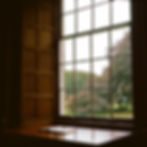Two Ways to Talk about Windows
- John Seel
- Nov 12, 2017
- 3 min read

There are two ways to talk about a window. We can talk about its construction as is typical of an Anderson Replacement commercial. Or we can talk about it as a portal in a home that allows one to see unexpected vistas. New Copernicans see windows as more than a commodity architectural feature to a house.
For the ancients, nature was just such a window. It was an icon or portal to a deeper spiritual reality—one doesn't look at it but through it. When a black bird flew across an ancient’s path, he or she immediately wondered what it meant about their spiritual condition. They had a natural connection with nature and to realities beyond nature to which nature pointed. Nature was to the ancients, as it is again for many New Copernicans, a “signal of transcendence.”

Carolly Erickson is an historian and novelist who understands this sensibility. She writes, “Medieval perception was characterized by an all-inclusive awareness of simultaneous realities. The bounds of reality were bent to embrace—and often to localize—the unseen, and determining all perception was a mutually held worldview which found in religious truths the ultimate logic of existence.” Celtic Christians of the past and deep ecologist today share this vision. Environmental activist David Abram concludes that “we are human only in contact, and conviviality, with what is not human.” While his spiritual orientation leads him to a form of animism, his insight that our lives only make sense when they are connected to a larger sense of reality is compelling. He writes, “Caught up in a mass of abstractions, our attention hypnotized by a host of human-made technologies that only reflect us back to ourselves, it is all too easy for us to forget our carnal inherence in a more-than-human matrix of sensations and sensibilities.” This openness to other realities is both pre-modern and post-Enlightenment. It is one of the most compelling sensibilities of the New Copernican experience. Abram asks, “How have we become so deaf and so blind to the vital existence of other species, and to the animated landscapes they inhabit, that we now so casually bring about their destruction?”
This sensibility does not come naturally to me. I work at it. When I take my dog on her walk I try to embrace a living spiritual connection with the trees and animals I encounter. Today was a special day, what I call a Trinitarian day. This was not because of something I was taught at church, but something I encountered in nature: two deer in the shadows of the woods, a noisy V-flight of Canada geese overhead, and a bald eagle perched in a tall tree. For me these are icons of the Father, Son, and Holy Spirit.

The Celtics took wild geese as their symbol of the Holy Spirit—noisy, communal, and purposeful—hence the Wild Goose Festival. For me the deer represent the incarnate Jesus (“As the deer pants for streams of water, so my soul pants for you, O God.” – Psalm 42:1). The bald eagle, which nests on our property near by, is my symbol of God the Father in all of his majestic grandeur. Sometimes a fox replaces the deer in my symbolic/mythic Trinity of animals.

Their collective presence on my walk today was a gift. A concrete reminder of God’s loving-presence with me as I go into this new week. C.S. Lewis went on a walk each day. It was not for the exercise or health benefits, as he was smoking his pipe as he walked. No it was for a more profound reason. He wanted to get out of his head, away from the abstractions, to connect to a larger concrete world. To do so has two benefits: it humbles one’s pretentiousness and it empowers one to connect to a design and meaning larger than oneself. Our iPhones simply reflect us back on ourselves. Nature calls us to something more.
